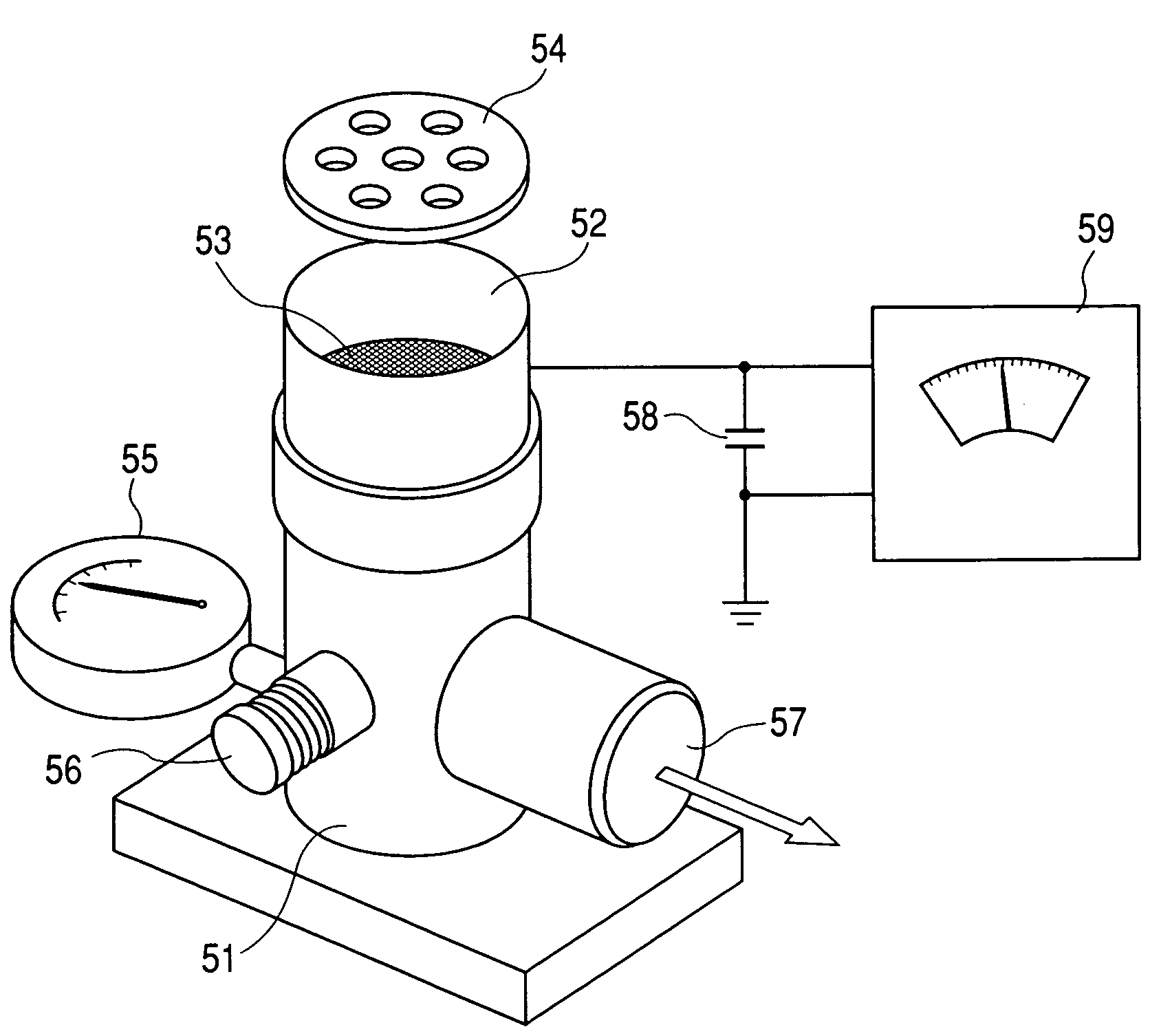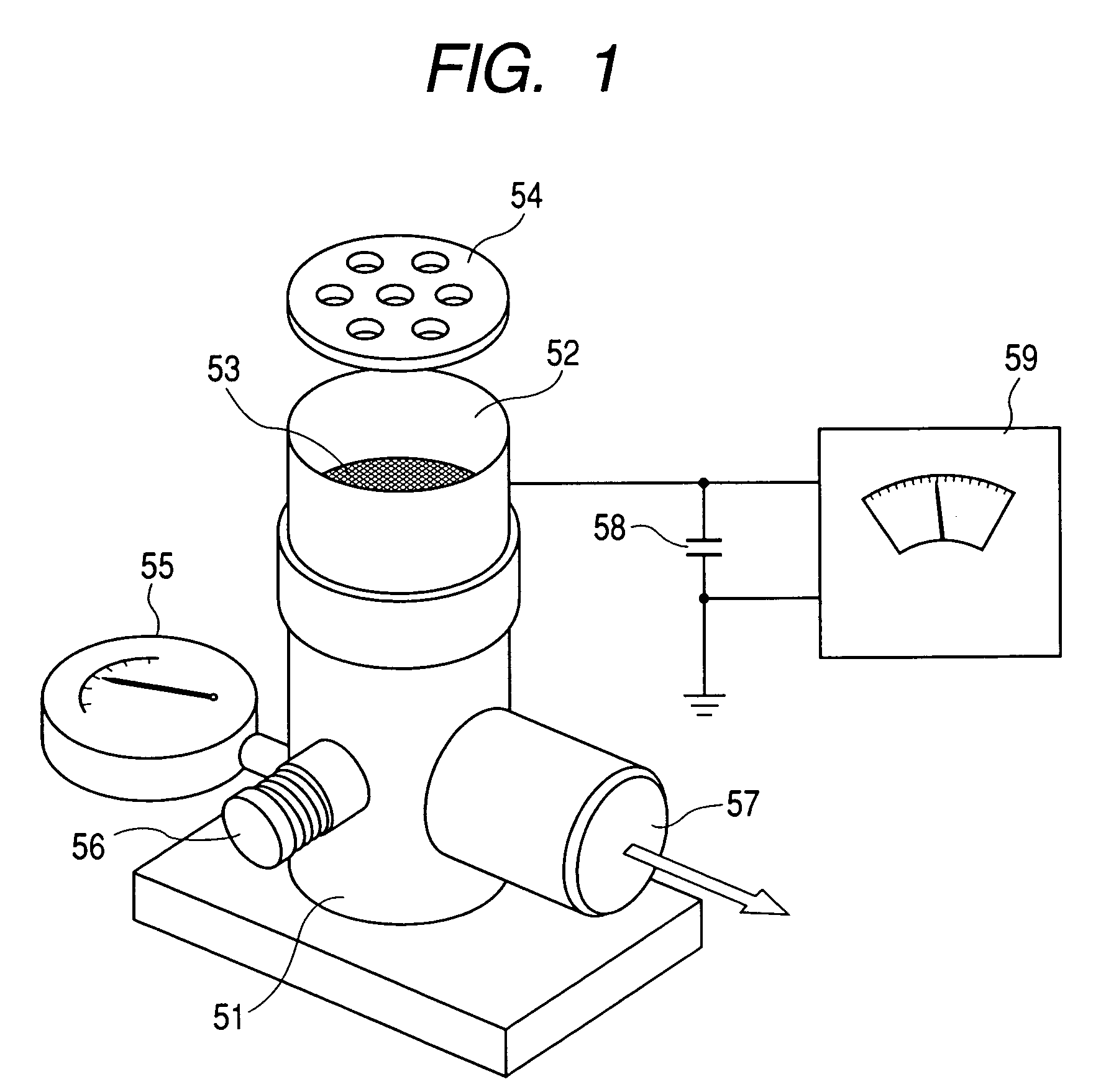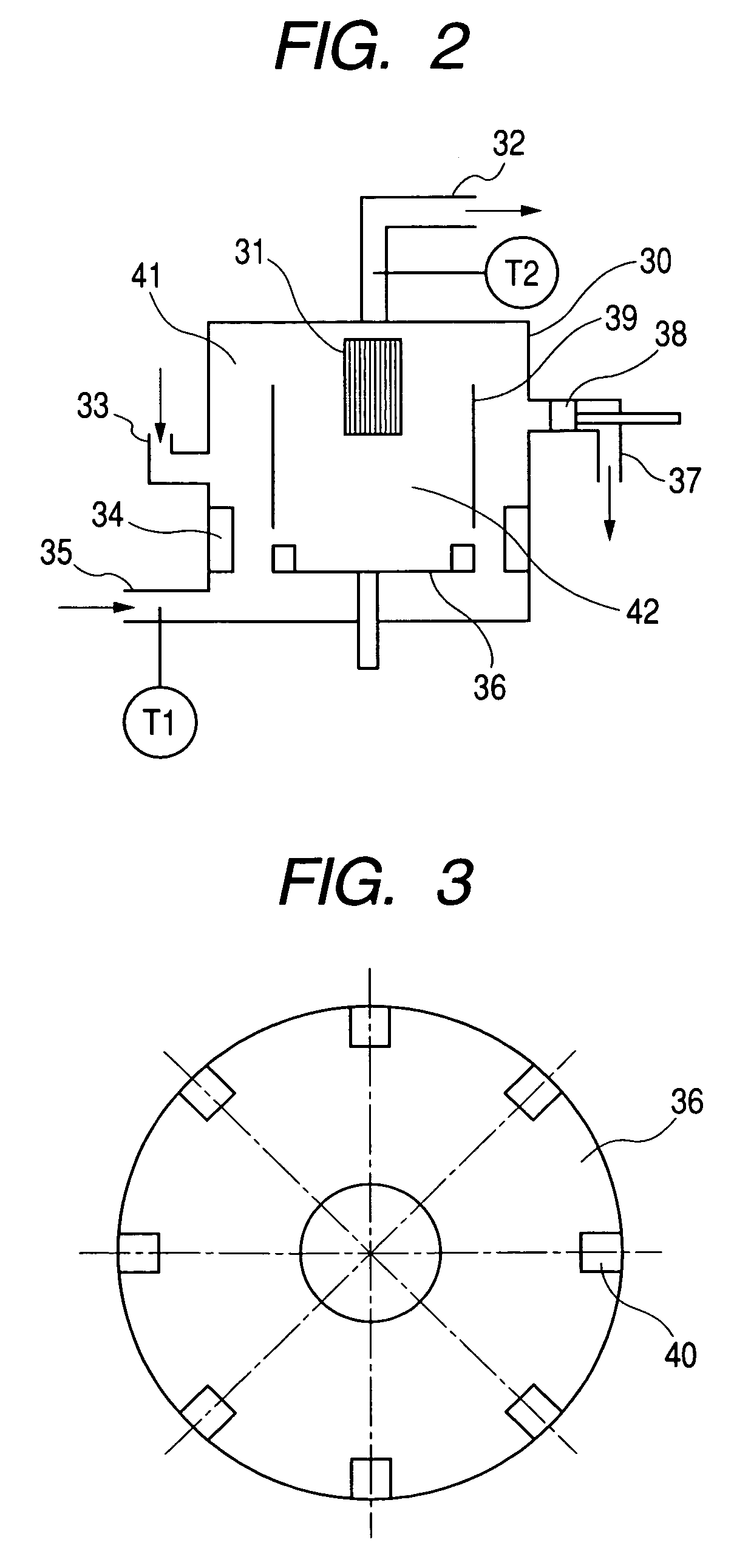Color toner
a technology of toner and color, applied in the field of toner, can solve the problems of poor fixing performance, inability to provide superior hardware, and coming to pass, and achieve the effects of developing performance, running stability, and superior transfer performan
- Summary
- Abstract
- Description
- Claims
- Application Information
AI Technical Summary
Benefits of technology
Problems solved by technology
Method used
Image
Examples
examples
[0184]The present invention is described below by giving specific working examples. The present invention is by no means limited to these examples.
[0185]Hybrid Resin
Production Example
[0186]As vinyl polymer unit materials, 1.9 mols of styrene, 0.21 mol of 2-ethylhexyl acrylate, 0.15 mol of fumaric acid, 0.03 mol of a dimer of α-methylstyrene and 0.05 mols of dicumyl peroxide were put into a dropping funnel. Also, 7.0 mols of polyoxypropylene(2.2)-2,2-bis(4-hydroxyphenyl)propane, 3.0 mols of polyoxyethylene(2.2)-2,2-bis(4-hydroxyphenyl)propane, 3.0 mols of terephthalic acid, 2.0 mols of trimellitic anhydride, 5.0 mols of fumaric acid and 0.2 g of tin 2-ethyhexanoate were put into a 4-liter four-necked flask made of glass, and a thermometer, a stirring rod, a condenser and a nitrogen feed tube were attached thereto. This was placed in a mantle heater. Next, the inside atmosphere of the flask was displaced with nitrogen gas, followed by gradual heating with stirring. With stirring at a ...
production example
[0188]3.6 mols of
[0189]polyoxypropylene(2.2)-2,2-bis(4-hydroxyphenyl)propane, 1.6 mols of polyoxyethylene(2.2)-2,2-bis(4-hydroxyphenyl)propane, 1.7 mols of terephthalic acid, 1.1 mols of trimellitic anhydride, 2.4 mols of fumaric acid and 0.1 g of tin 2-ethyhexanoate were put into a 4-liter four-necked flask made of glass, and a thermometer, a stirring rod, a condenser and a nitrogen feed tube were attached thereto. This was placed in a mantle heater. In an atmosphere of nitrogen, reaction was carried out at 215° C. for 5 hours to obtain a polyester resin (Tm: 110° C.; Tg: 52° C.; acid value: 15 mg·KOH / g). The polyester resin obtained is designated as Resin B. Results of measurement of molecular weight by GPC are shown in Table 1.
[0190]
Styrene-acrylate ResinProduction Example(by weight)Styrene70 partsn-Butyl acrylate24 partsMonobutyl maleate 6 partsDi-tert-butyl peroxide 1 part
[0191]In a four-necked flask, with stirring of 200 parts by weight of xylene, the inside atmosphere of the ...
example 1
[0195]Cyan Toner 1 was prepared in the following way.
[0196]First Kneading Step;
[0197]
(by weight)Resin A 70 partsFirst pasty pigment with 30% by weight of solid content,100 partsobtained by removing water to a certain extent from apigment slurry containing C.I. Pigment Blue 15:3,without having passed through any drying step at all(remaining 70% by weight: water)
[0198]The above raw materials were first introduced into a kneader type mixer, and were heated with mixing under application of no pressure. At the time the resultant mixture reached a maximum temperature (which depends necessarily on the boiling point of a solvent in the paste; in this case, about 90 to 100° C.), the pigment in aqueous phase became distributed or moved to the molten resin phase. Having made sure of this, the mixture was further melt-kneaded for 30 minutes with heating to cause the pigment in the paste to move sufficiently to the resin phase. Thereafter, the mixer was first stopped, and the hot water was disch...
PUM
| Property | Measurement | Unit |
|---|---|---|
| diameter | aaaaa | aaaaa |
| diameter | aaaaa | aaaaa |
| diameter | aaaaa | aaaaa |
Abstract
Description
Claims
Application Information
 Login to View More
Login to View More - R&D
- Intellectual Property
- Life Sciences
- Materials
- Tech Scout
- Unparalleled Data Quality
- Higher Quality Content
- 60% Fewer Hallucinations
Browse by: Latest US Patents, China's latest patents, Technical Efficacy Thesaurus, Application Domain, Technology Topic, Popular Technical Reports.
© 2025 PatSnap. All rights reserved.Legal|Privacy policy|Modern Slavery Act Transparency Statement|Sitemap|About US| Contact US: help@patsnap.com



